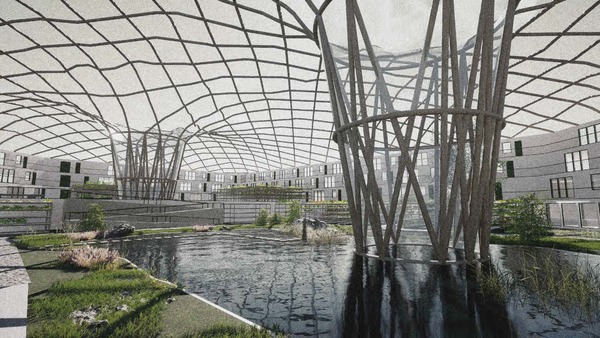Roots to Renewal: A Study on Valuing Timber as a Slow Regenerative Resource
Timber has become one of the most prolific materials in the built environment. While aiming to reach zero-carbon cities, tree regeneration will not be efficient enough to combat the demand. Soon over half of the world’s forests will be clear cut resulting in significant repercussions on air, soil, and water qualities. Urbanized areas will become centers of degrading climate conditions. Outdoor spaces once viewed as premium will no longer be usable. Urban sprawl and housing demand will only exacerbate the environmental issues with timber scarcity.
The degrading climate makes all outdoor activities difficult. Urban farming will be heavily relied on, but accessing them will be difficult. In this context an ecological metabolist approach would be ideal. The aim being to provide a mixed-use housing complex consisting of all the necessary resources to live. Waste from one part of the development could then be reused as resources for others. A zero-carbon building design could be better achieved.
This thesis project sought to examine how to design under these future circumstances using computational design methods. The question was: how to design an urban block typology dictated by effective adjacency of programmatic and spatial typologies in response to the unique site conditions resulting from extreme deforestation. Satisfying the spatial requirements of each typology is difficult when each requires conflicting characteristics. Using computation enabled an ideal configuration to be produced.
The primary feature of the design was a mycelium grid shell enclosure working in compression. Mycelium is continuing to be researched as a potential building material for its fast and lightweight properties. However, it does not work well in tension. This project then lead to a secondary question: if timber becomes a limited resource, what structural materials will be used while reducing embodied carbon?


